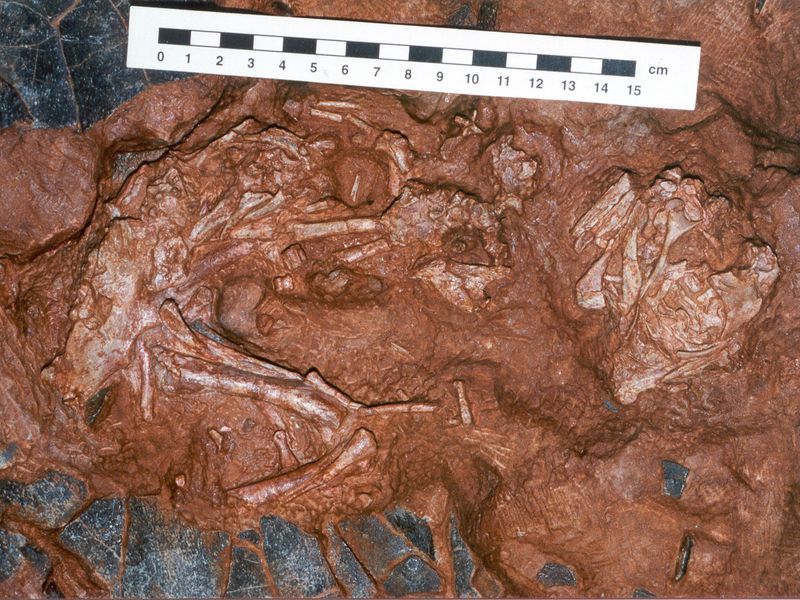Infant Dinosaur Found Still Encased in Its Egg Identified as New Species
Research suggests that the embryo belongs to the cassowary-like oviraptorosaurs
:focal(1004x497:1005x498)/https://tf-cmsv2-smithsonianmag-media.s3.amazonaws.com/filer/11/ae/11ae0b6e-371f-48f6-ab00-4bc6221946c8/beibeilong-nesting-illustration.jpg)
The cover of the May, 1996 issue of National Geographic featured an illustration of a dinosaur embryo that was modeled on a batch of 66-million-year old giant eggs discovered in China's Henan Province. Researchers dubbed the little guy “Baby Louie,” but because he was the only dino fossil in his clutch and because the remains of his parents were never found, Louie was a taxonomic orphan—he was never assigned to a species. Now, 20 years later, researchers have determined that Louie is one of a kind, reports Ben Guarino at The Washington Post, and represents an entirely new species of dino.
The study was finally published this week in the journal Nature Communications—much delayed due to questions about the fossil's shady origins, Guarino reports. In the early 1990s local farmers in China scoured the countryside in search of dinosaur eggs that they then sold to foreign collectors for a hefty profit, according to a press release. The fossilized nest in which Louie resides contains six to eight very large eggs and was collected in Henan Province before it was exported to a fossil dealer in the United States.
Paleontologist Darla Zelenitsky from the University of Calgary, lead author of the study, tells Guarino that although she saw the fossil soon after it made its way to North America in the 1990s, she was unsure if it was illegally collected and only wanted to write about the fossil after it was returned to China. In 2001, the fossil was sold to the Indianapolis Children’s Museum, but in 2013 it was returned to the Henan Geological Museum.
“The lengthy time of the fossil’s residence outside China certainly slowed down our research on the project,” Zelenitsky tells Guarino, “as we wanted to see it returned to China before publication.”

So what type of dino is Baby Louie? When Zelenitsky and her colleagues first examined the nest, the elongated oval eggs reminded them of oviraptorosaurs, six-foot long dinos that lived throughout what is now Asia and North America during the Cretaceous period, which began some 145 million years ago. But the eggs were much too large for that. In fact, Guarino reports that they measured 18-inches long, 6 inches wide and weighed in at 8 to 10 pounds each.
As Nicholas St. Fleur at The New York Times reports, in 2007 paleontologists discovered the fossil remains from a gigantic, one-ton oviraptorosaur. Up until this point, most of the beasts that had been unearthed were too small to be Louie's relatives. But the 2007 discovery opened the possibility that little Louie could an oviraptor.
Now, the researchers have categorized him as a new species within this group: Beibeilong sinensis, which roughly means "Chinese baby dragon" based on both Chinese and Latin words. Louie’s parents would have measured some 25 feet long and weighed more than three tons, Erika Engelhaupt writes for National Geographic, and likely would have resembled the giant cassowary. The researchers also believe this was the largest dinosaur species known to sit on a nest and take care of eggs.
Clutches of similarly massive eggs, called Macroelongatoolithus, have been found in China, Korea, Mongolia and the U.S., meaning Louie may have many more relatives out there after all.
“The eggs are telling us that these dinosaurs were probably much more common than what their bones are revealing in the fossil record,” Zelenitsky tells Engelhaupt.